Not even the most myopic observer could fail to notice the Summer Triangle, an outstanding example of a pattern of stars that can be seen during the brighter months.
During summer evenings, and indeed all through the hours of darkness, the sky is dominated by three brilliant stars – Vega, Deneb and Altair.

The stars of the Summer Triangle are:
The stars are not officially associated, and are not even in the same constellation.
Yet they make up a large triangle – an asterism – that cannot possibly be overlooked even by the most myopic observer.
They are also among the brightest stars in the sky; indeed, Vega is surpassed only by Sirius, Canopus, alpha (α) Centauri and Arcturus.
Of these, only Arcturus is north of the celestial equator, while Canopus and alpha (α) Centauri never rise over the British horizon.
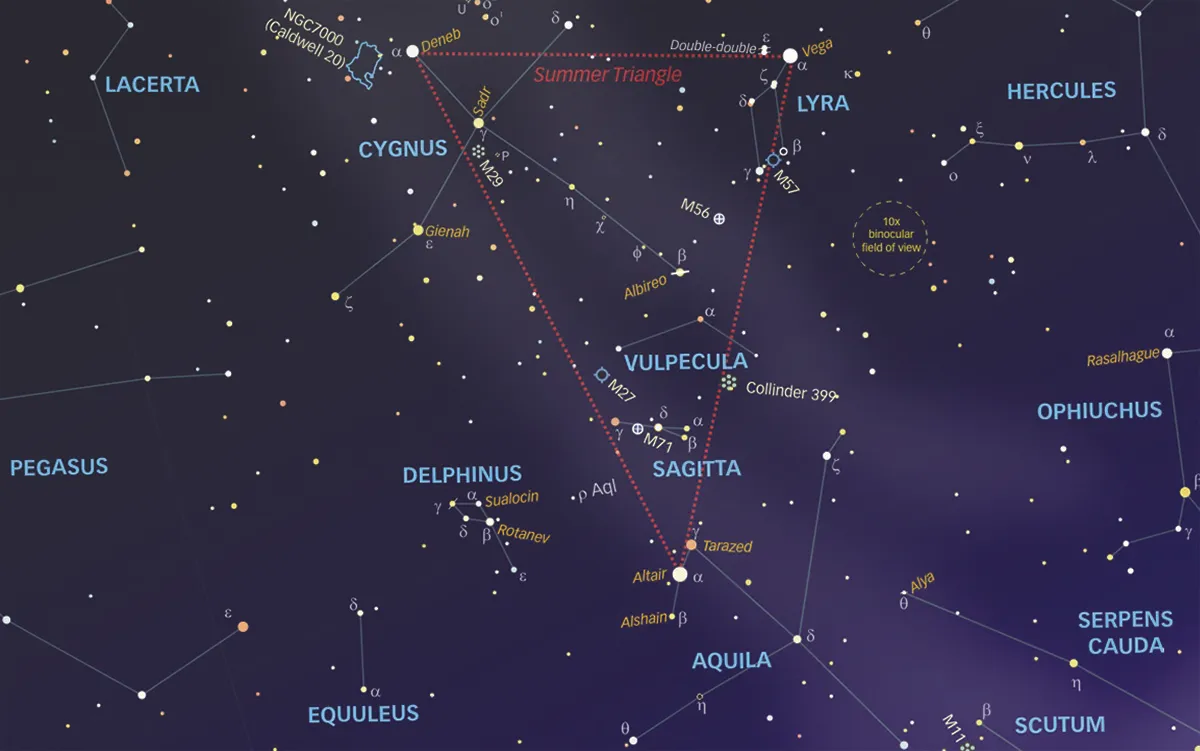
An asterism is a pattern made up of stars that are not genuinely associated.
The Summer Triangle is an outstanding example of an asterism, and during a Sky at Night television programme I casually christened it, never imagining that the name would become widely accepted!
Strictly speaking, a constellation may be regarded as a kind of asterism; for example, the five stars making up the cross of Cygnus do not have any real connection with each other.
How bright are the Summer Triangle stars?
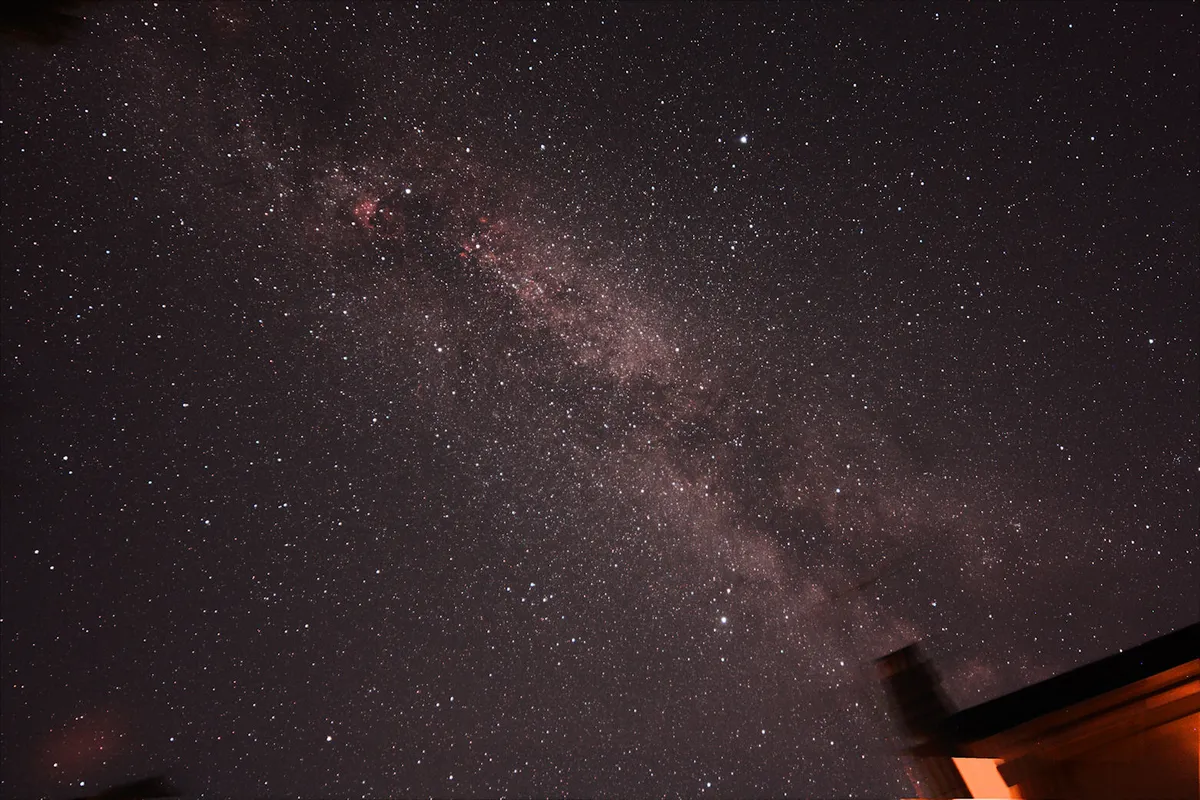
Vega is of apparent magnitude +0.0, Altair +0.8 and Deneb +1.2, so that Vega is much the most brilliant, well over a magnitude brighter than Deneb.
Of the brightest stars in the sky, Vega comes fifth, Altair 12th and Deneb 19th
Yet as so often in astronomy, appearances are deceptive.
Vega and Altair are ordinary main sequence stars, classed as dwarfs, while Deneb is an immensely remote, powerful supergiant.
How to see the Summer Triangle
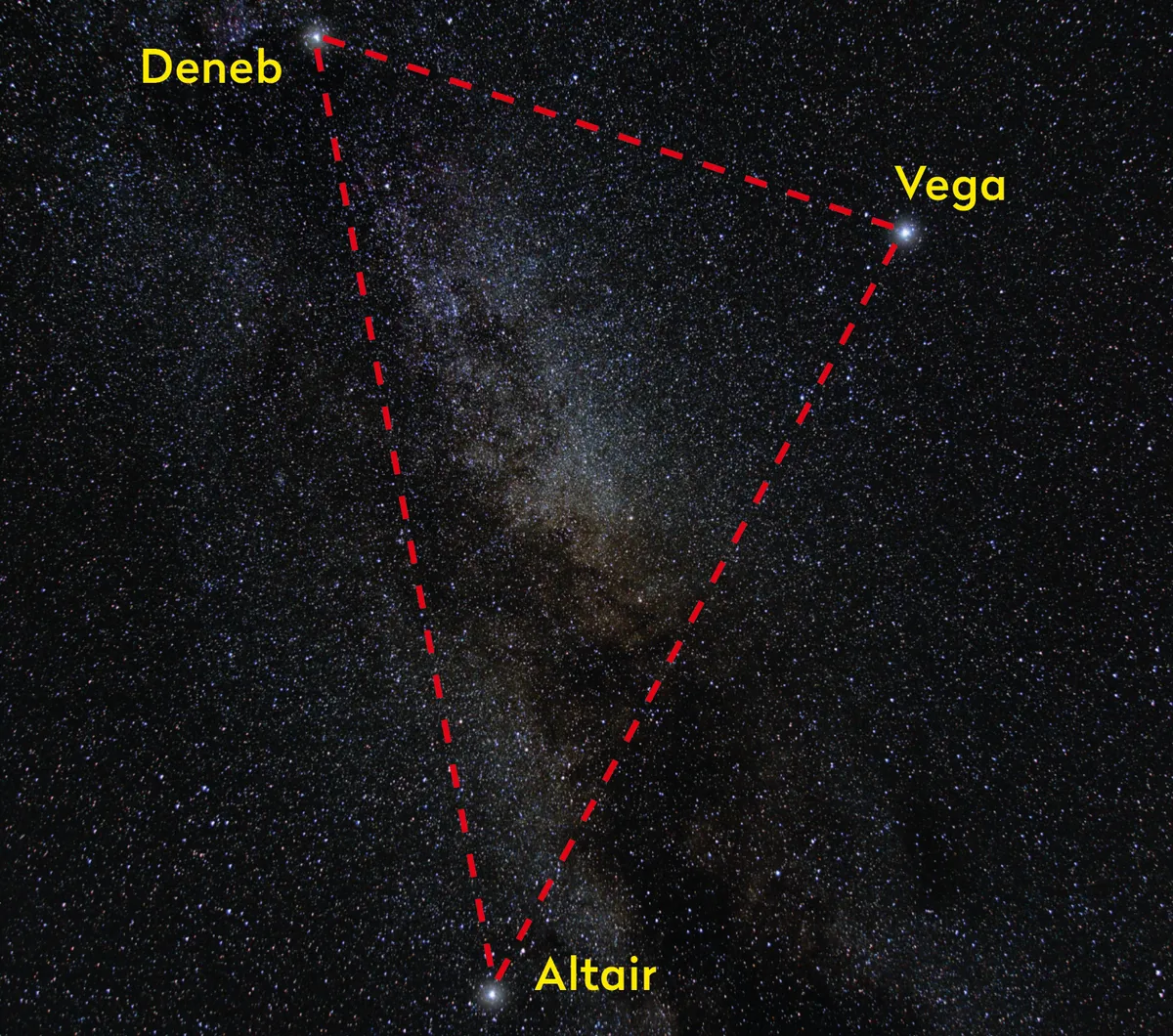
From Britain, Vega passes almost overhead during summer evenings, and it stands out particularly well because there are no other bright stars in the immediate area: the constellation of Lyra contains no other star above the third magnitude.
Vega is decidedly bluish in colour, and in binoculars or a telescope it is strikingly beautiful.
According to an old Chinese legend, the star was a weaving girl and Altair was a shepherd boy.
They were so engrossed with each other that they neglected their heavenly duties, and so wereplaced on opposite sides of the barrier of the Milky Way, and were allowed to meet only on special occasions.
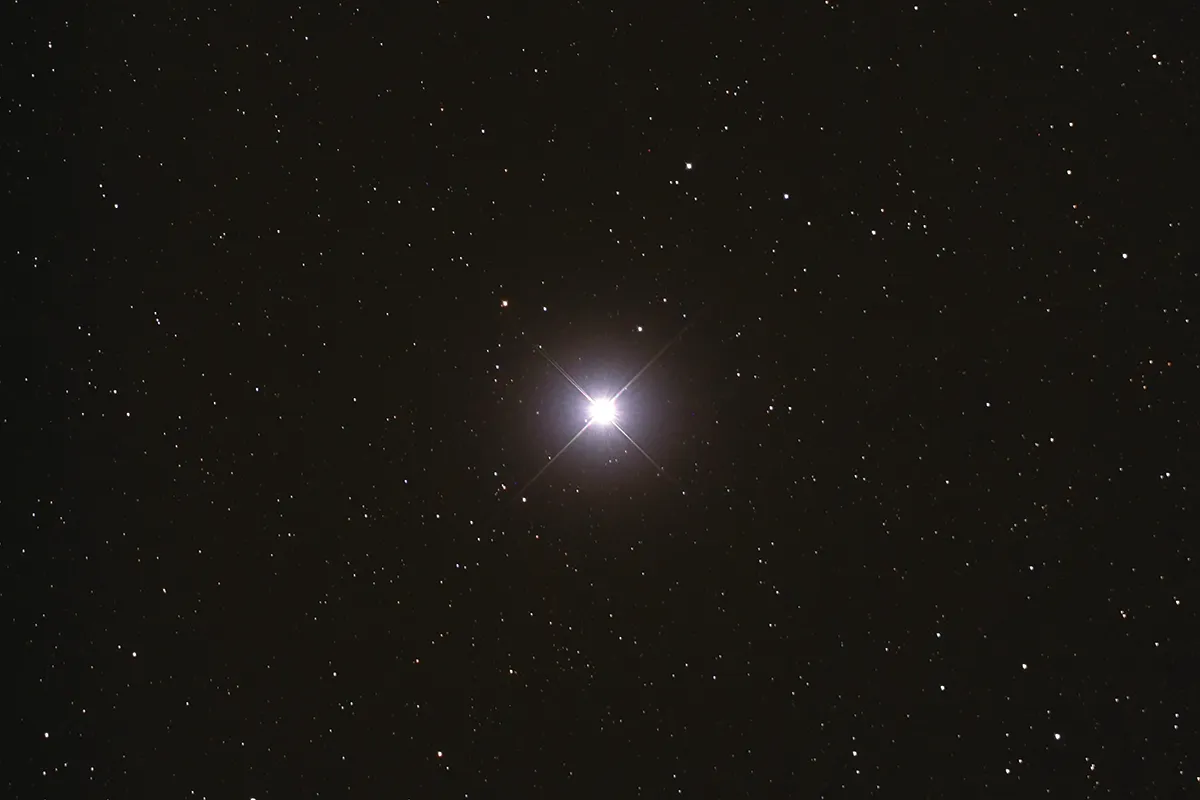
It is worth noting that the only other brilliant star to reach the zenith from British latitudes is Capella, which does so on winter evenings – but Capella is yellowish.
It and Vega are on opposite sides of the north celestial pole, and about the same distance from it – so that when Capella is high up, Vega is low down, and vice versa.
Owing to the precession of the equinoxes, Vega will be the Pole Star by about the year 14,000 AD.
Science of the Summer Triangle stars
Vega (alpha (α) Lyrae)
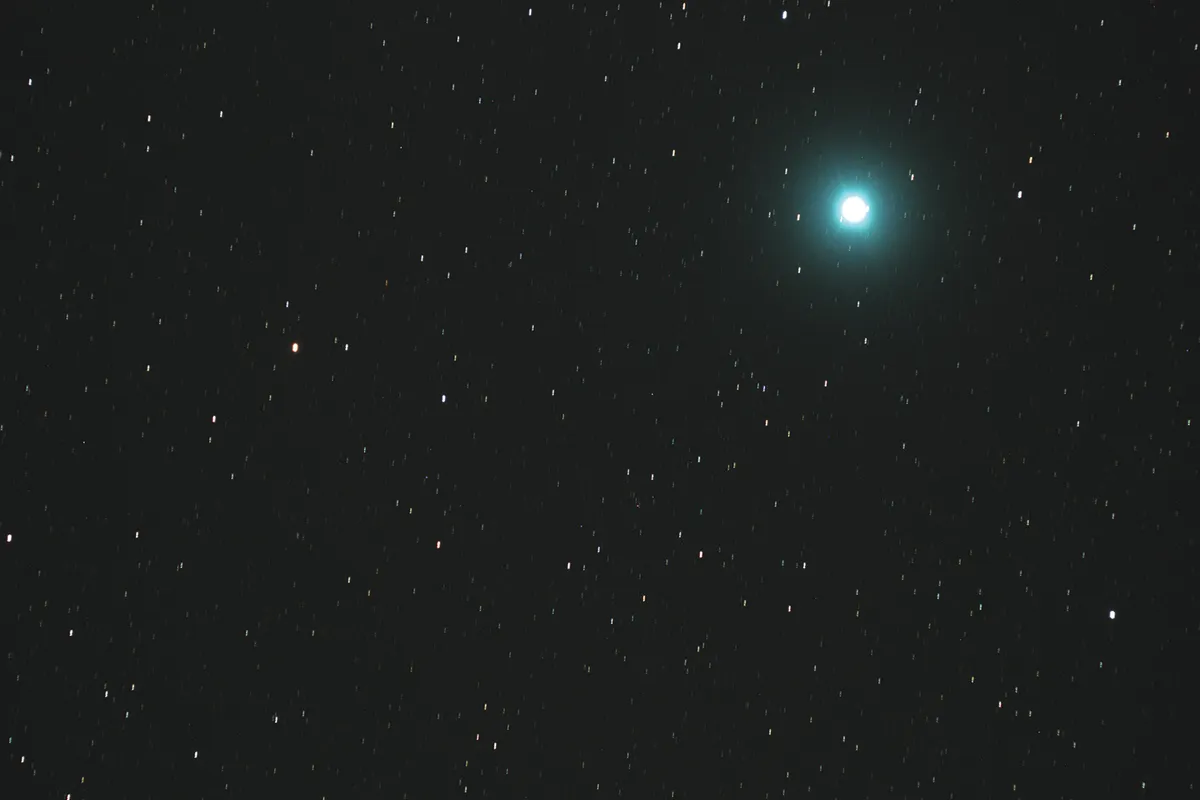
- Apparent magnitude: +0.03
- Absolute magnitude: +0.58
- Type: A0 Va
- Distance: 25.3 lightyears
- Mass: 2.6 times the Sun
- Luminosity: 52 times the Sun
- RA: 18h 36m 56.3s
- Dec.: 38º 47’ 18”
Vega is 25 lightyears away, and 52 times as luminous as the Sun; it is two and a half times as massive, and considerably hotter; its age is thought to be in the order of 200 million years.
When it was examined in 1983 with the then-new Infra-Red Astronomical Satellite, IRAS, it was found to have what was described at the time as “a huge infrared excess”, due to a cloud of cool particles surrounding the star.
It seems that Vega is associated with a debris disc, and irregularities in it may possibly indicate the presence of a planet – though this is obviously very uncertain.
Vega has a tenth magnitude companion at a separation of just under an arcminute, but there’s no connection; this is an optical pair, not a binary system.
Altair (alpha (α) Aquilae)
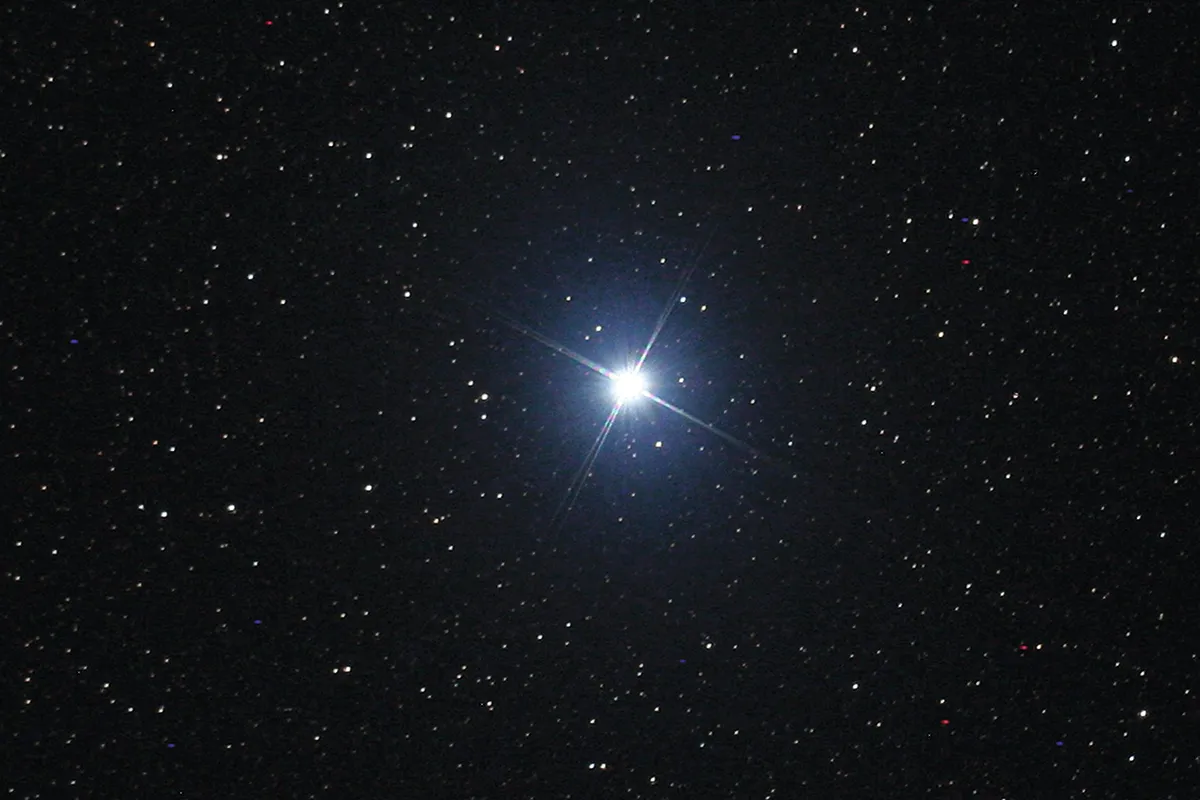
- Apparent magnitude: +0.77
- Absolute magnitude: +2.22
- Type: A7
- Distance: 16.8 lightyears
- Mass: 1.7 times the Sun
- Luminosity: 10 times the Sun
- RA: 19h 50m 47.0
- Dec.: +8 52º 6’
Altair, one of our nearer neighbours, at a distance of less than 17 lightyears, is a mere 10 times as powerful as the Sun, and less than twice as massive.
Its spectral lines are broad, because Altair spins so quickly. The rotation period is probably no more than 9 hours, so that the star is flattened.
Its equatorial diameter is about 15% greater than its polar diameter. Any planets would have a curious sun, but there are no signs that Altair is the centre of a planetary system.
Neither are there any optical or binary companions.
Deneb (alpha (α) Cygni)
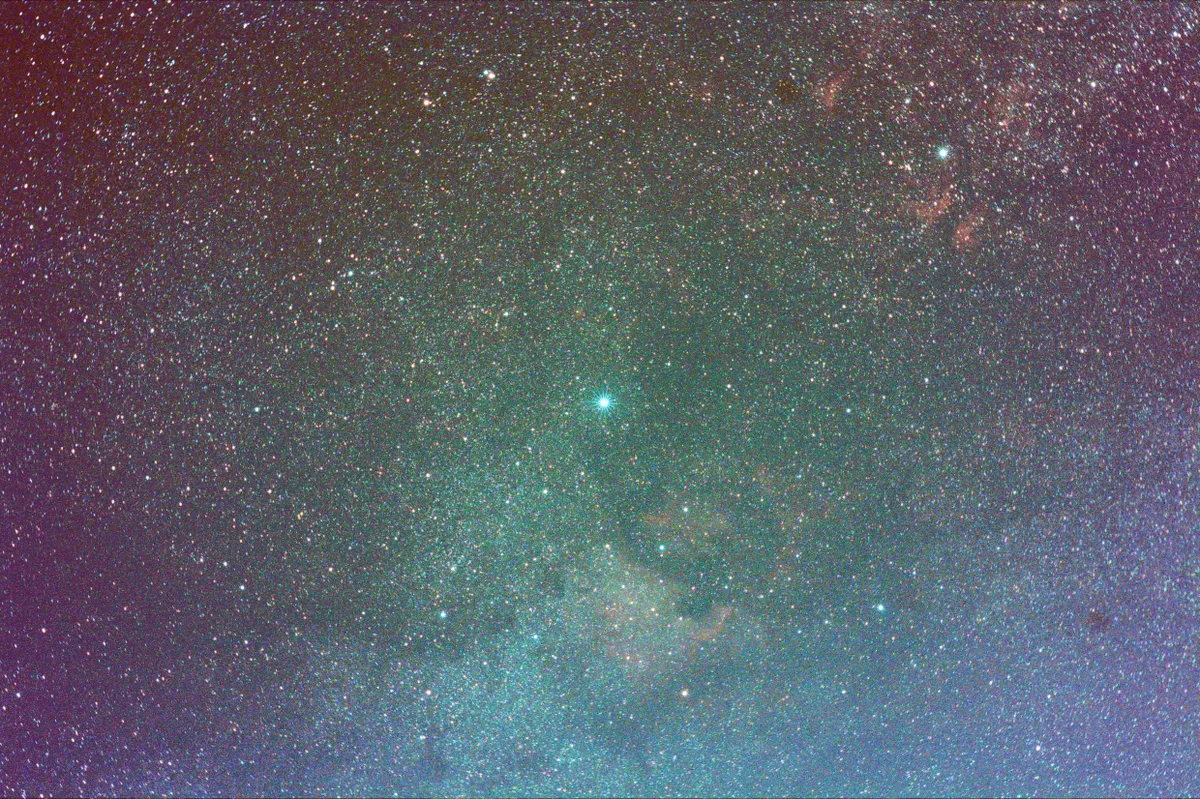
- Apparent magnitude: +1.25
- Absolute magnitude: -8.7
- Distance: 3,000 lightyears
- Type: A2 Ia
- Mass: 25 times the Sun
- Luminosity: 250,000 times the Sun
- RA: 20h 41m 25.9s
- Dec.: +45º 16’ 49”
The third member of the Summer Triangle, Deneb is so remote that its distance is difficult to measure with any real accuracy.
Probably the best estimate is 3,000 lightyears, in which case it is about 260,000 times as luminous as the Sun – the most powerful of all the first magnitude stars – and perhaps 25 times as massive as the Sun.
This makes it a true cosmic heavyweight. If it were as close to us as Altair, it would look much brighter than the full Moon.
Its diameter is probably greater than that of the Earth’s orbit round the Sun.
In one version of the Chinese legend, Deneb acts as chaperone when weaving girl and shepherd boy cross the Milky Way bridge to meet.
Even for a supergiant, it’s plain that this must have been quite a difficult task!
Constellations of the Summer Triangle
Once you've found the Summer Triangle, take the time to explore its neighbouring constellations.
Lyra
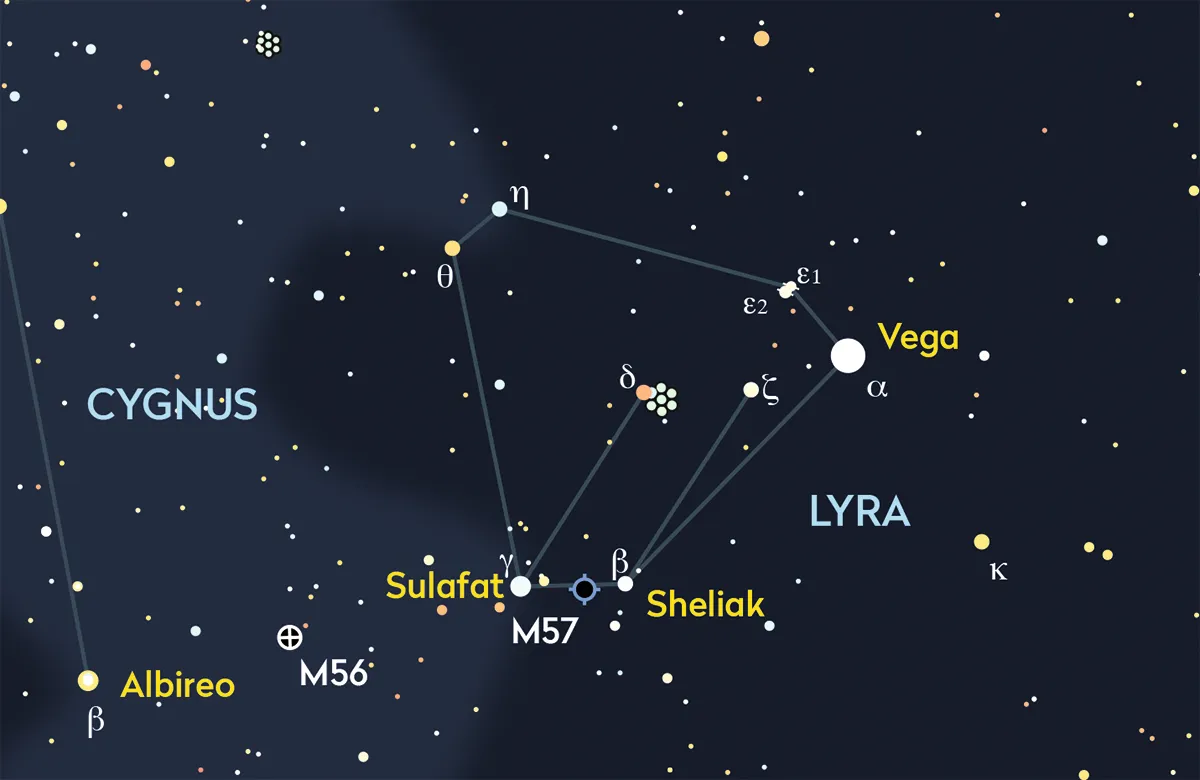
Despite covering less than 300 square degrees of the sky, Lyra contains a wealth of interesting objects, quite apart from Vega.
Epsilon (ε) Lyrae (RA 18h 44m, dec. +39º 40’) is a naked–eye double; while the components are of magnitudes +4.7 and +5.l.
Even a small telescope will show that each component is itself a double, so that we have a quadruple system.
The two pairs are certainly associated, but the orbital period must be thousands of years.
Zeta (ζ) Lyrae (RA 18h 45m, dec. +37º 36’) is also a double separable with a small telescope.
Beta (β) Lyrae, or Sheliak (RA 18h 50m, dec. +33º 22’), is an eclipsing binary with a period just short of 13 days.
Here we have two massive stars, orbiting so close together that they are distorted with material swapping between them.
When they pass in front of one another as viewed from Earth, we see two shallow dips in brightness.
Note that this behaviour is very different from that of the Algol system, in which the component stars are far less equal to one another.
The result is that during the 13-day cycle, there is one deep and one shallow minimum.
Using gamma (γ) (mag. +3.2) and kappa (κ) (mag. +4.3) Lyrae as comparison stars, it is easy to draw up an interesting light-curve for Sheliak.
Between beta and gamma lies a magnificent planetary, the Ring Nebula (M57), one of the showpieces of the sky.
It is easy to see the ring itself, but the 15th magnitude central star is, it has to be said, decidedly elusive.
Cygnus
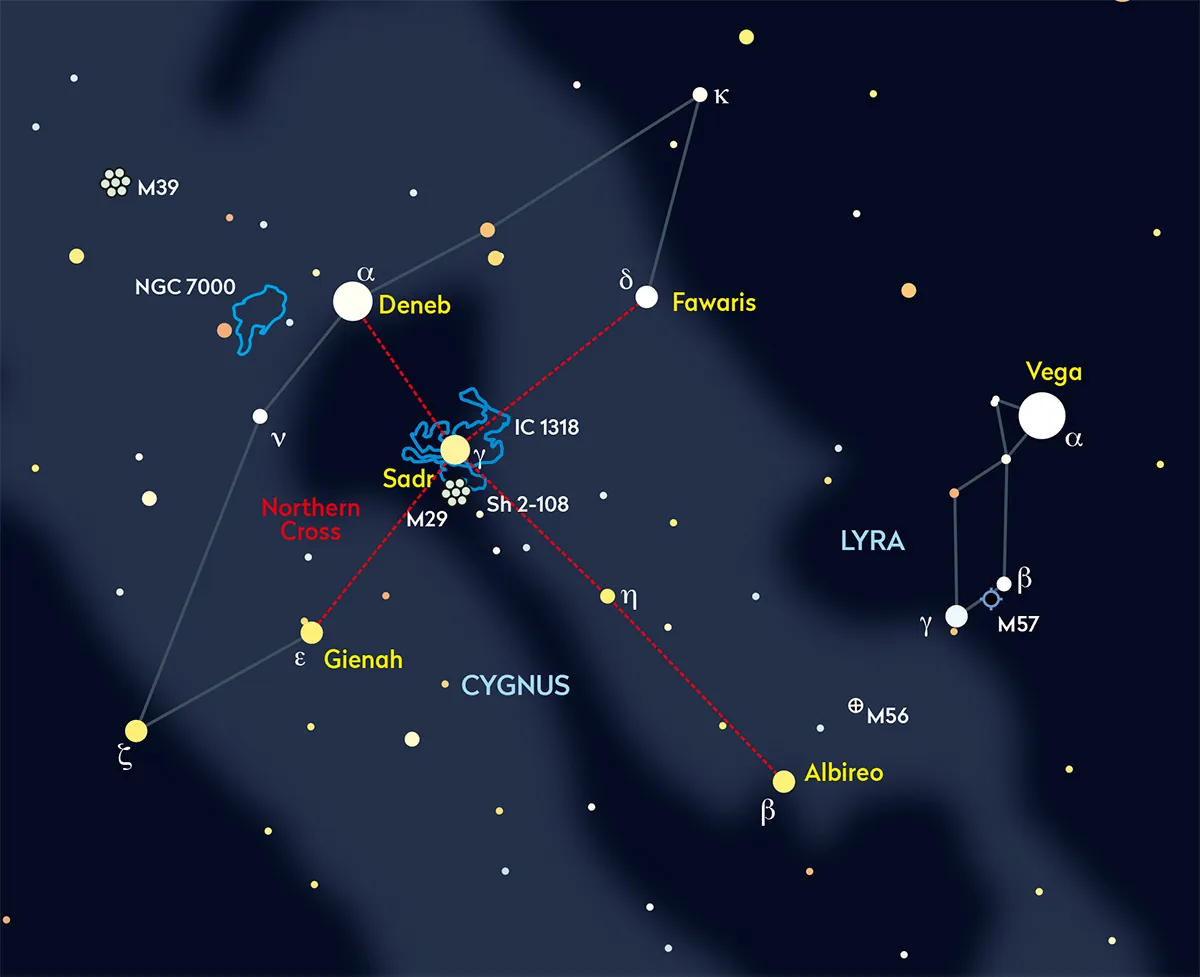
Cygnus, led by Deneb, is one of the main constellations of the northern sky. It takes the form of a cross – unlike the Southern Cross, which is more like a kite.
With Deneb, the stars of the cross are gamma (γ) or ‘Sadr’ (mag. +2.2); epsilon (ε) or ‘Gienah’ (mag. +2.5); delta (δ) (mag. +2.9); and beta (β) or ‘Albireo’ (mag. +3.1).
Delta has apparently never been given a proper name of its own.
Albireo is fainter than the rest, and further away from the centre of the pattern, but makes up for this by being arguably the loveliest coloured double in the entire sky.
The third-magnitude primary is golden yellow, while the fifth-magnitude companion is vivid blue.
The separation is over 34 arcseconds, so that this is a very wide, easy pair.
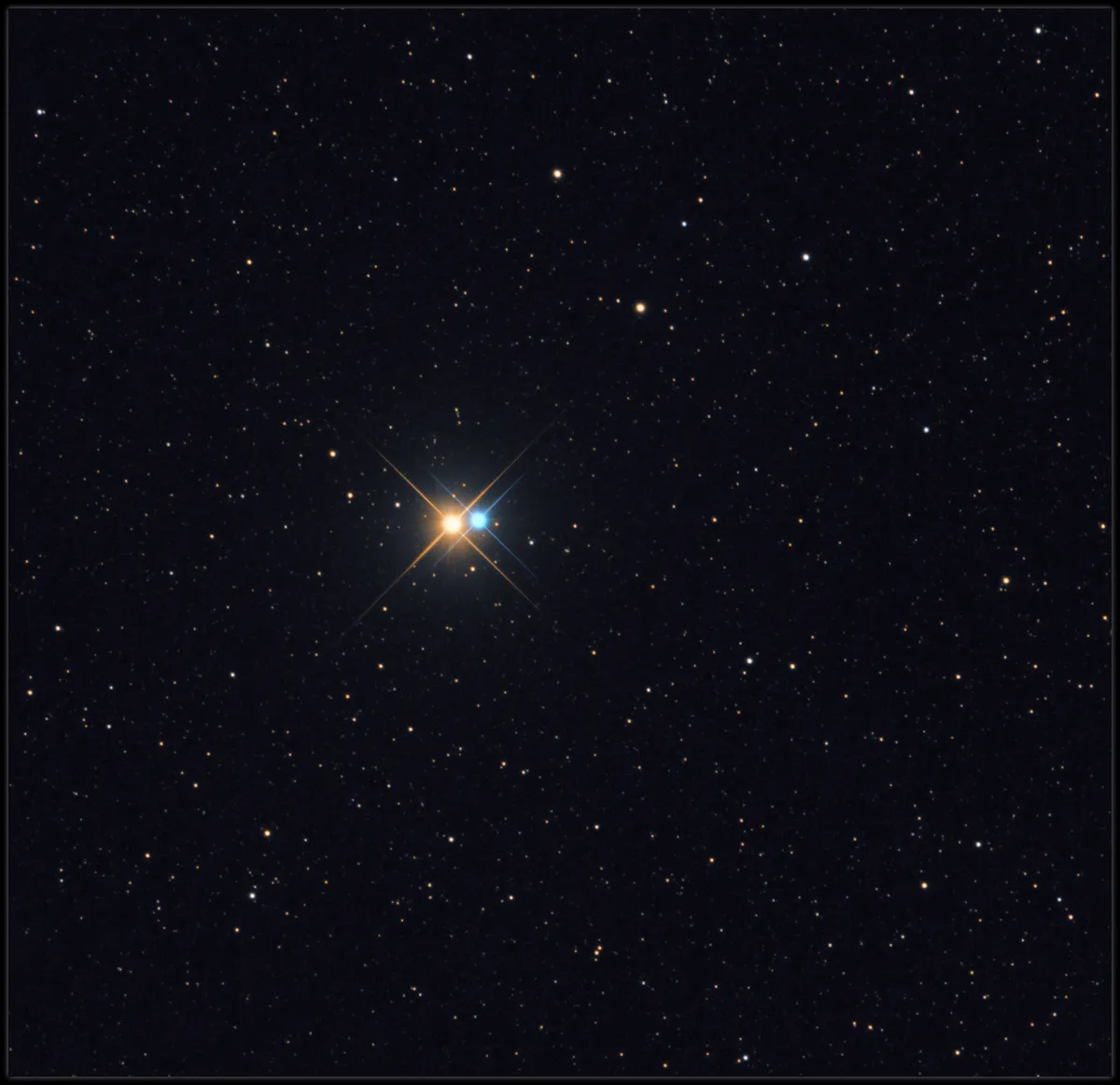
Between Sadr and Albireo, close to eta (η) (mag. +3.9) is the long-period Mira variable chi (χ) Cygni, with a range from magnitude +3.3 to +14.2 and a period of 407 days.
Another Mira variable, U Cygni (RA 20h 20m, dec. +47º 54’) is one of the reddest stars in the sky, with a range of magnitude +5.9 to +12, and a period of 462 days.
It is worth noting that as with all Mira stars, neither the magnitudes nor the periods are absolutely constant – and no two cycles are exactly alike.
P Cygni (RA 20h 18m, dec. +38º 02’) is exceptionally luminous and remote.
When it rose to magnitude +3.5 in 1600 AD, it was regarded as a nova, but is now classed as a variable of the S Doradus type.
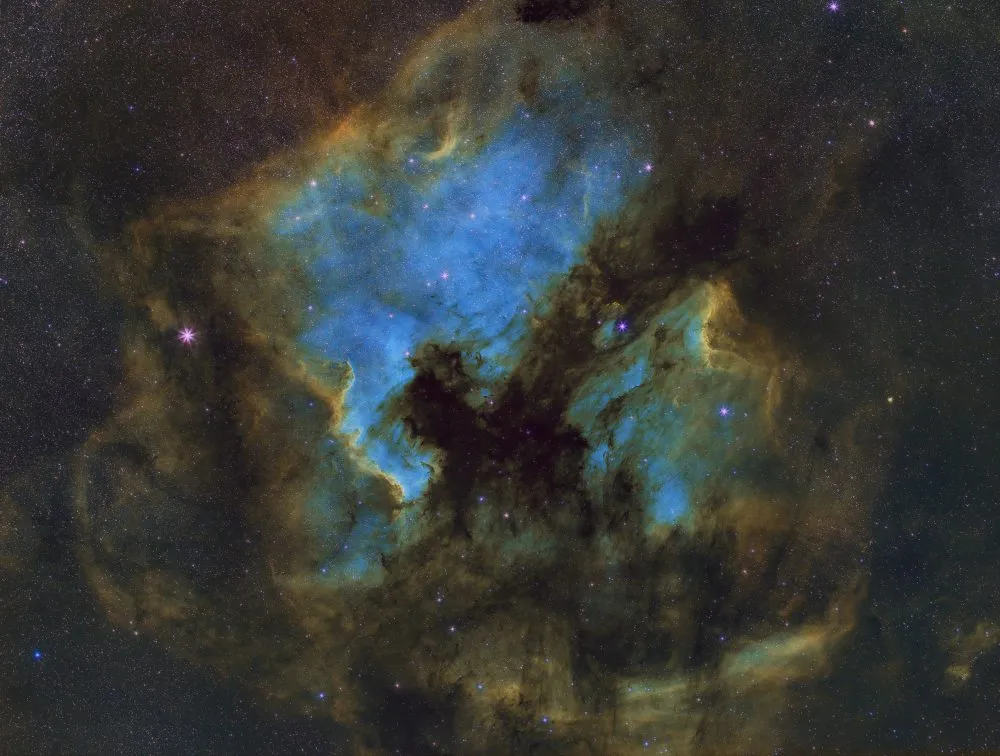
For many years now it has remained at around magnitude +5, but it may increase again at any time. Eventually, it may well explode as a supernova.
The Milky Way flows through Cygnus, so that the whole region is very rich.
Find the North America Nebula, NGC 7000 (or Caldwell 20), which is probably best seen with binoculars, and it really does recall the shape of the North American continent.
Sit down and arm yourself with a good atlas, and you will find plenty of nebular objects in Cygnus.
Aquila
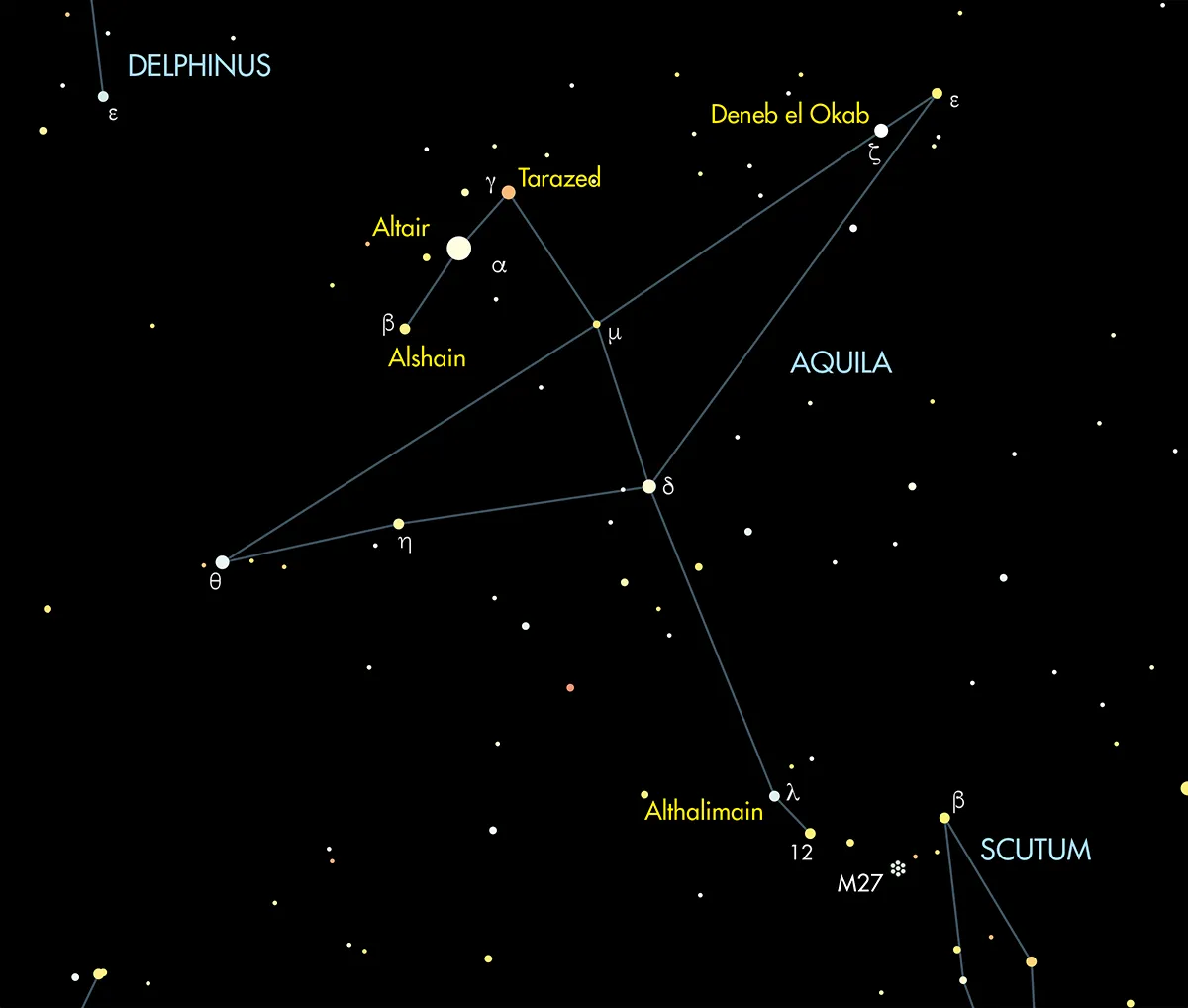
The constellation of Aquila, the celestial Eagle, is very prominent. Altair or alpha (α) is flanked by two stars – the reddish Tarazed or gamma (γ) (mag. +2.7), and beta (β) or ‘Alshain’ (mag. +3.7).
Antares in Scorpius is similarly flanked, but is of course very red.
Eta (η) Aquilae, the middle member of a line of three stars south of Altair, is a Cepheid variable, with magnitudes from +3.3 to +4.4, and a period of 7.2 days.
It was identified in 1784, at about the same time as delta (δ) Cephei. Had this been announced a few weeks earlier, we might be referring to Aquilids instead of Cepheids.
To measure the variability of eta, use theta (θ) (mag. +3.3) and delta (δ) (mag. +3.4) as comparison stars.
Not far from delta, in the adjacent constellation of Serpens (the Serpent), is a wide, easy double, ‘Alya’ or theta (θ) Serpentis.
The components are equal at magnitude +4.5, and the separation is over
22 arcseconds.
The main Aquila pattern leads to the little constellation of Scutum (the Shield), where we find the superb open cluster M11, the Wild Duck.
This is impressive through binoculars, but even more so in a telescope. It was discovered by Gottfried Kirch, from the Berlin Observatory, as long ago as the year 1681.
Delphinus
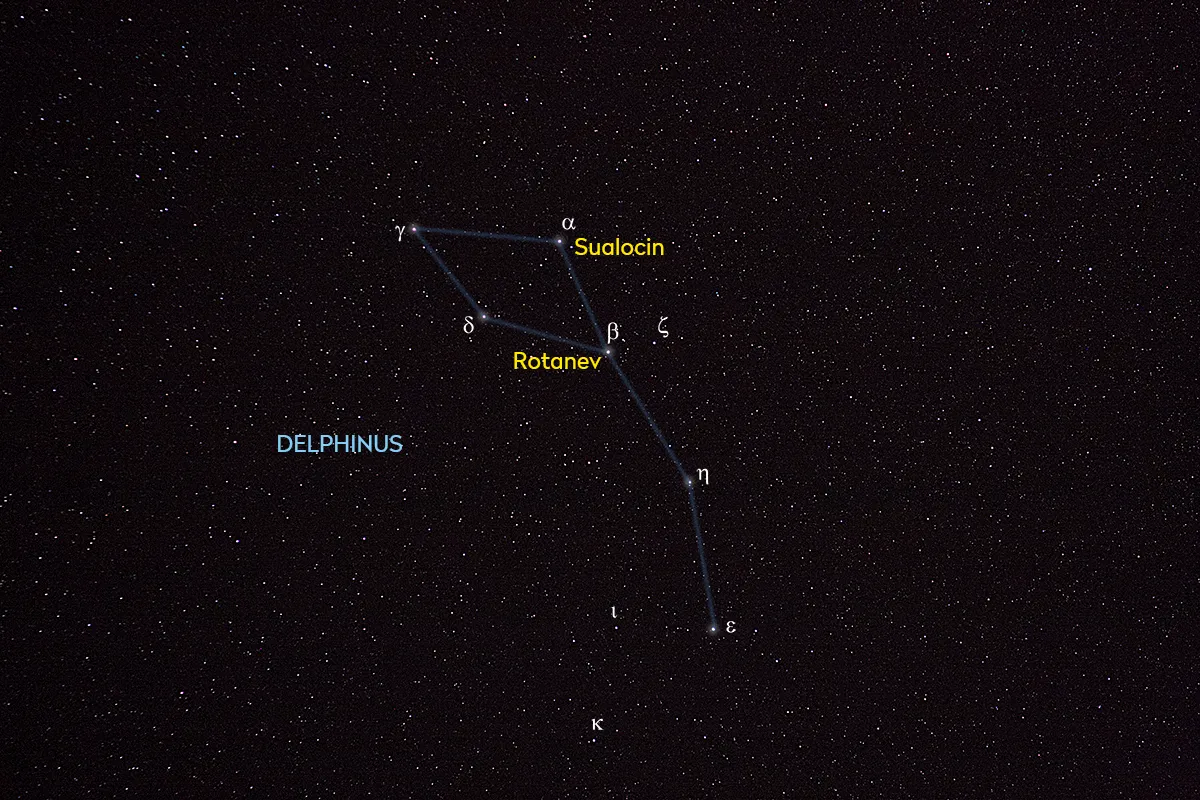
Delphinus (the Dolphin) is so compact that unwary observers have been known to mistake it for the Pleiades.
Its two brightest stars, alpha (α) (mag. +3.8) and beta (β) (mag. +3.5) are called Sualocin and Rotanev.
These unusual names were given by Nicolaus Rotanev; it shouldn’t take you long to see why.
A curiosity here is the magnitude +4.9 star rho (ρ), or 67 Aquilae, which has changed constellations.
When the constellation boundaries were laid down by the IAU it was in Aquila, but its proper motion – 0.004 arcseconds a year in right ascension, has now carried it across the border into Delphinus.
A typical trick question asked in astronomical quizzes is ‘in what constellation is the star rho Aquilae?’
Delphinus is joined by the small groups of Sagitta (the Arrow), Equuleus (the Foal) and Vulpecula (the Fox).
The latter was once Vulpecula et Anser, the Fox and Goose, but the Goose has disappeared from the maps. Possibly the Fox has eaten it.
All in all, there is much to see in and around the Summer Triangle, and it will be with us until well into the Autumn.
4 deep-sky objects to spot in the Summer Triangle
Albireo (beta (β) Cygni)
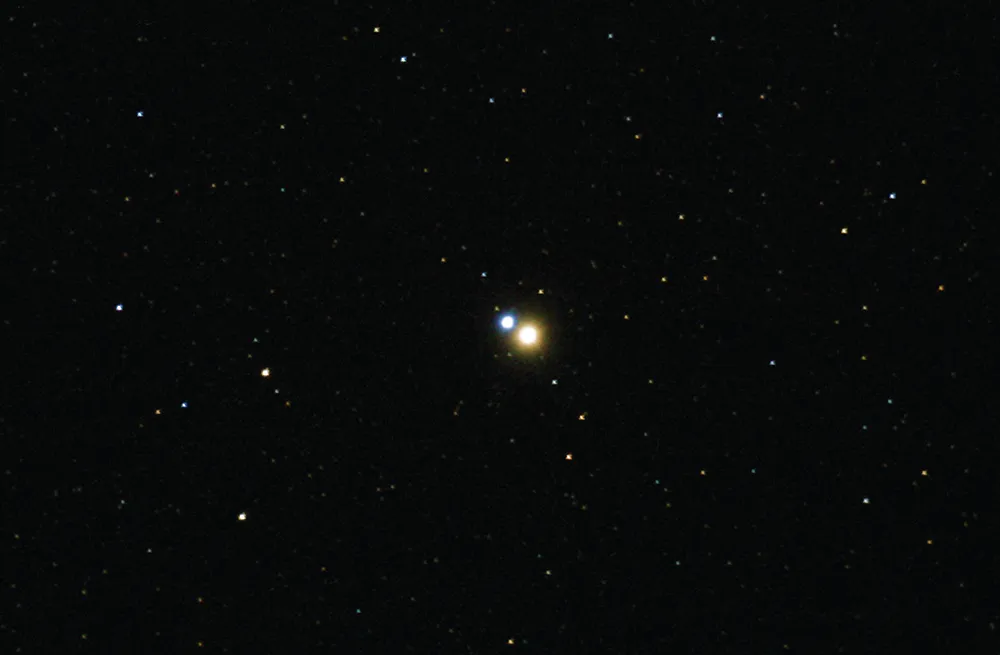
- RA: 19h 30.7m
- Dec.: 27º 58’
- Magnitudes: +3.1 and +5.1
- Separation: 34.4 arcseconds
- Position angle: 54º
A beautiful coloured double.Golden yellow and vivid blue, the double is separable with good binoculars and looks superb in a telescope.
The primary is a K-type giant, 390 lightyears away and 100 times as luminous as the Sun. Even the A-type secondary is much more powerful than the Sun.
This binary’s orbital period is very long indeed.
M56 (NGC 6779)
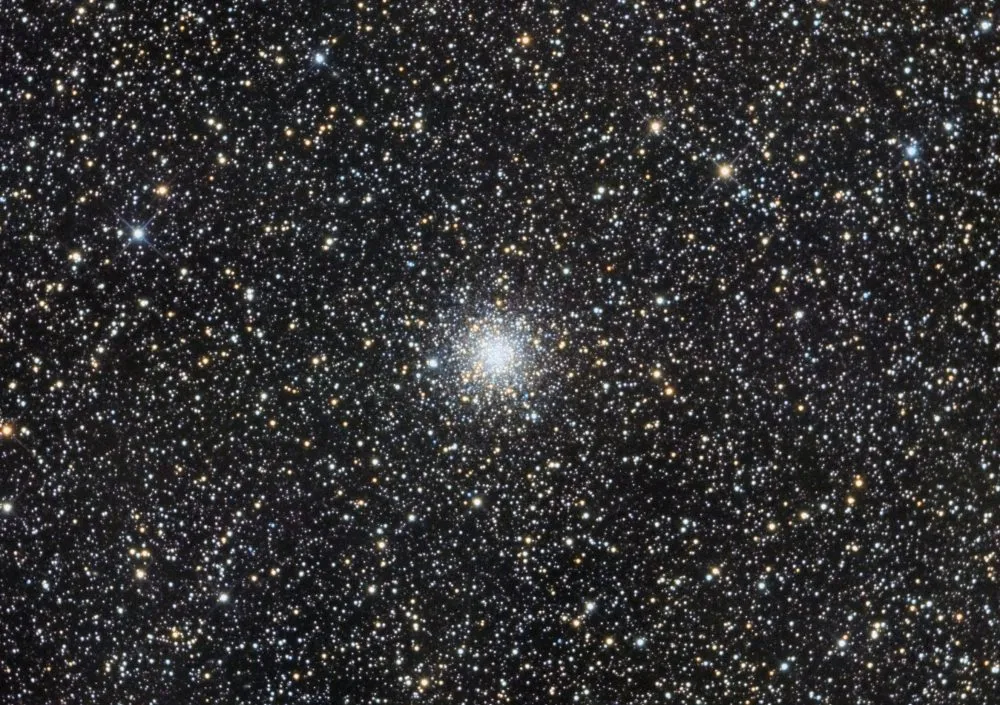
- RA: 19h 16.6m
- Dec.: +30º 11’
- Integrated magnitude: +8.2
A globular cluster in Lyra,M56 was discovered by Charles Messier himself in 1779.He described it as a “nebula without a star, having little light.”
It lies close to the magnitude +5 star 2 Cygni. There is no really well-marked central condensation, and some early observers classed it wrongly as an open star cluster.
Its distance is given as about 45,000 lightyears. The outermost parts are fairly easy to resolve.
M27 (NGC 6853)
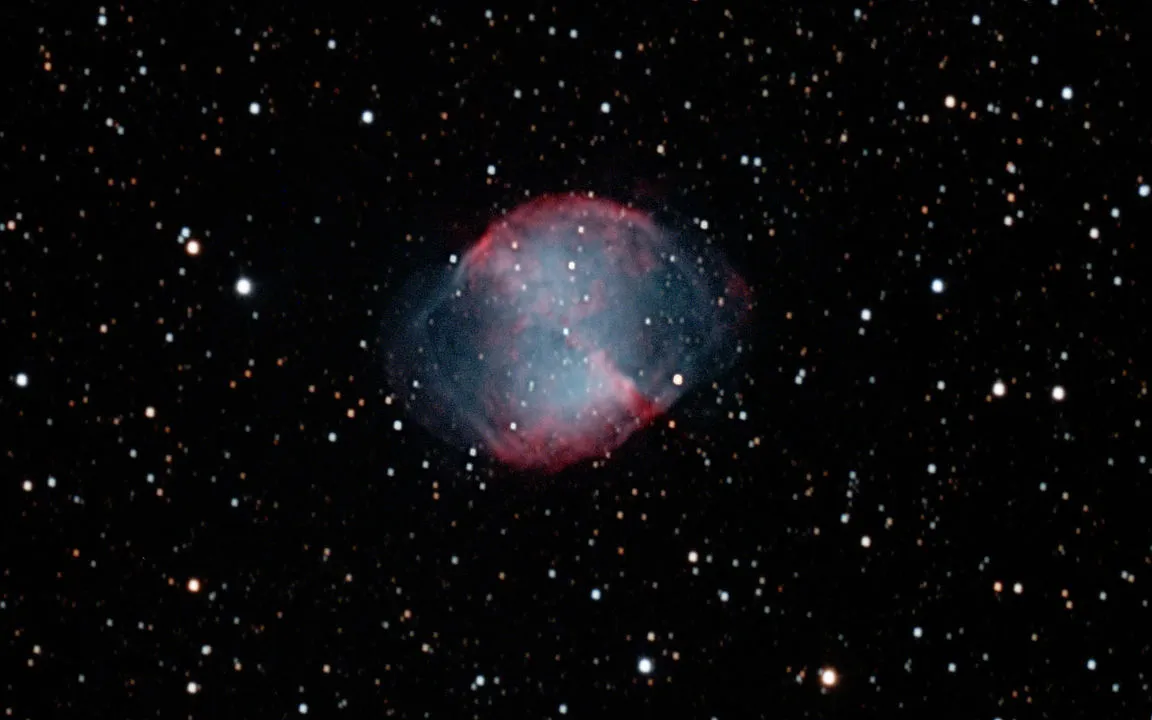
- RA: 19h 59.6m
- Dec.: +22º 43’
- Integrated magnitude: +7.6
A planetary nebula in Vulpecula, the Dumbbell Nebula is much brighter than the famous Ring Nebula in Lyra.
It was discovered by Messier in 1764 and is easy to find, as it’s just 3º north of the star gamma (γ) Sagittae.The central star, at magnitude +12, is not too easy to see.
Because of its remarkable shape, M27 is a favourite target for astrophotographers. Its distance is almost 1,000 lightyears.
M71 (NGC 6838)

- RA: 19h 53.8m
- Dec.: +18º 47’
- Integrated magnitude: +8.3
A globular cluster in Sagitta, this beauty was discovered by de Chesaux in about 1736, and independently by Mechain in 1780.
It is easy to locate, midway between the stars gamma and delta (δ) Sagittae, and 20 arcminutes from the magnitude +6 star 9 Sagittae.
The cluster is 18,000 lightyears away, which means that it is definitely a globular and not an unusually condensed galaxy cluster.
This guide originally appeared in the June 2006 issue of BBC Sky at Night Magazine.
